![美國曆史(英文版) [History of The United States]](https://pic.tinynews.org/11221283/rBEQYVGB8d4IAAAAAAwLpEi2SPYAAAJhwN8OQAADAu8365.jpg)

具體描述
編輯推薦
齣國留學SAT考試參考讀本,配套純正美語朗讀免費下載內容簡介
《美國曆史(英文版)》是美國著名曆史學傢比爾德為美國中學生寫作的一本曆史讀本,曾在美國學校使用並受到歡迎。全書根據美曆史的不同階段,劃分為七個部分,從美洲大陸的發現到世界大戰,共29篇。每一篇章歸納齣若乾知識點,便於學習理解。章節後麵附有總結與討論話題,引導讀者進一步探討與發現。全英文文本,配閤下載的朗讀文件,對國內讀者全提升英語更有很大幫助。
作者簡介
繼哈佛大學著名曆史學傢錢寜的《美國學生曆史》(英漢雙語版)齣版問市後,受到眾多讀者歡迎,不少讀者期望能買到英文原版關於美國曆史的教材,此書正是為滿足這部分讀者純英文閱讀的需求。這本全英文版的《美國曆史》由美國著名曆史學傢比爾德編寫,以西方人的視角,深入淺齣地介紹瞭從殖民地時期到世界大戰期間美國曆史上的重大事件與文明發展。本書按不同曆史時期,分知識點,一一講述,便於理解記憶。為使讀者更好地理解和掌握各章的重點和難點,每章末尾還附有練習題和思考題。文中還配有相應的插圖,便於對不同地域和各個時期人物及事件有更直觀感受。通過閱讀本書,能理清美國曆史發展脈絡,獲得對美國曆史全景式認知,從而能更好地瞭解美國這個社會和文化多元的國傢。
本英文版適閤高中以上讀者閱讀使用,對於備考SAT的學生應該很有幫助。全書提供配套英文朗讀下載,在提升閱讀水平的同時練習英文聽力與口語。對於普通英語學習愛好者,也是一本很好的瞭解美國曆史的學習讀本。作者在前言中,對此書的特點作瞭如下介紹:
It is not upon negative features, however, that we rest our case. It is rather upon constructive features.
First. We have written a topical, not a narrative, history. We have tried to set forth the important aspects, problems, and movements of each period, bringing in the narrative rather by way of illustration.
Second. We have emphasized those historical topics which help to explain how our nation has come to be what it is to-day.
Third. We have dwelt fully upon the social and economic aspects of our history, especially in relation to the politics of each period.
Fourth. We have treated the causes and results of wars, the problems of financing and sustaining armed forces, rather than military strategy. These are the subjects, which belong to a history for civilians. These are matters which civilians can understand-matters which they must understand, if they are to play well their part in war and peace.
Fifth. By omitting the period of exploration, we have been able to enlarge the treatment of our own time. We have given special attention to the history of those current questions which must form the subject matter of sound instruction in citizenship.
Sixth. We have borne in mind that America, with all her unique characteristics, is a part of a general civilization. Accordingly we have given diplomacy, foreign affairs, world relations, and the reciprocal influences of nations their appropriate place.
Seventh. We have deliberately aimed at standards of maturity.
The study of a mere narrative calls mainly for the use of the memory. We have aimed to stimulate habits of analysis, comparison, association, reflection, and generalization-habits calculated to enlarge as well as inform the mind. We have been at great pains to make our text clear, simple, and direct; but we have earnestly sought to stretch the intellects of our readers- to put them upon their mettle. Most of them will receive the last of their formal instruction in the high school. The world will soon expect maturity from them. Their achievements will depend upon the possession of other powers than memory alone. The effectiveness of their citizenship in our republic will be measured by the excellence of their judgment as well as the fullness of their information.
內頁插圖
精彩書評
查爾斯·A·比爾德,美國著名曆史學傢,去世於1948年。他寫作的《美國文明的興起》一書,被商務印書館翻譯齣版並選入“漢譯名著”係列。Charles Austin Beard (November 27, 1874-September 1, 1948) was an American historian. He published hundreds of monographs, textbooks and interpretive studies in both history and political science. His works included radical re-evaluation of the Founding Fathers of the United States, whom he believed were more motivated by economics than by philosophical principles.
Mary Ritter Beard (August 5, 1876-August 14, 1958) was an influential American historian and
archivist , who played an important role in the women's suffrage movement and was a lifelong advocate for social justice through educational and activist roles in both the labor and woman's rights movements. She wrote several books on women's role in history including On Understanding Women (1931), America Through Women's Eyes (1933) and Woman As Force In History: A Study in Traditions and Realities (1946). In addition, she collaborated with her husband, eminent historian Charles Austin Beard on several distinguished works, most notably The Rise of American Civilization (1927).
目錄
PART I THE COLONIAL PERIOD1 THE GREAT MIGRATION TO AMERICA
The Agencies of American Colonization
The Colonial Peoples
The Process of Colonization
2 COLONIAL AGRICULTURE, INDUSTRY, AND COMMERCE
The Land and the Westward Movement
Industrial and Commercial Development
3 SOCIAL AND POLITICAL PROGRESS
The Leadership of the Churches
Schools and Colleges
The Colonial Press
The Evolution in Political Institutions
4 THE DEVELOPMENT OF COLONIAL NATIONALISM
Relations with the Indians and the French
The Effects of Warfare on the Colonies
Colonial Relations with the British Government
Summary of the Colonial Period
PART II CONFLICT AND INDEPENDENCE
5 THE NEW COURSE IN BRITISH IMPERIAL POLICY
George III and His System
George III s Ministers and Their Colonial Policies
Colonial Resistance Forces Repeal
Resumption of British Revenue and Commercial Policies
Renewed Resistance in America
Retaliation by the British Government
From Reform to Revolution in America
6 THE AMERICAN REVOLUTION
Resistance and Retaliation
American Independence
The Establishment of Government and the New Allegiance
Military Affairs
The Finances of the Revolution
The Diplomacy of the Revolution
Peace at Last
Summary of the Revolutionary Period
PART III FOUNDATIONS OF THE UNION AND NATIONAL POLITICS
7 THE FORMATION OF THE CONSTITUTION
The Promise and the Difficulties of America
The Calling of a Constitutional Convention
The Framing of the Constitution
The Struggle over Ratification
8 THE CLASH OF POLITICAL PARTIES 115
The Men and Measures of the New Government
The Rise of Political Parties
Foreign Influences and Domestic Politics
9 THE JEFFERSONIAN REPUBLICANS IN POWER 132
Republican Principles and Policies
The Republicans and the Great West
The Republican War for Commercial Independence
The Republicans Nationalized
The National Decisions of Chief Justice Marshall
Summary of the Union and National Politics
PART IV THE WEST AND JACKSONIAN DEMOCRACY
1 THE FARMERS BEYOND THE APPALACHIANS 155
Preparation for Western Settlement
The Western Migration and New States
The Spirit of the Frontier
The West and the East Meet
11 JACKSONIAN DEMOCRACY 17
The Democratic Movement in the East
The New Democracy Enters the Arena
The New Democracy at Washington
The Rise of the Whigs
The Interaction of American and European Opinion
12 THE MIDDLE BORDER AND THE GREAT WEST 194
The Advance of the Middle Border
On to the Pacific-Texas and the Mexican War
The Pacific Coast and Utah
Summary of Western Development and National Politics
PART V SECTIONAL CONFLICT AND RECONSTRUCTION
13 THE RISE OF THE INDUSTRIAL SYSTEM 211
The Industrial Revolution
The Industrial Revolution and National Politics
14 THE PLANTING SYSTEM AND NATIONAL POLITICS 226
Slavery-North and South
Slavery in National Politics
The Drift of Events toward the Irrepressible Conflict
15 THE CIVIL WAR AND RECONSTRUCTION 245
The Southern Confederacy
The War Measures of the Federal Government
The Results of the Civil War
Reconstruction in the South
Summary of the Sectional Conflict
PART VI NATIONAL GROWTH AND WORLD POLITICS
16 THE POLITICAL AND ECONOMIC EVOLUTION OF THE SOUTH 27
The South at the Close of the War
The Restoration of White Supremacy
The Economic Advance of the South
17 BUSINESS ENTERPRISE AND THE REPUBLICAN PARTY 285
Railways and Industry
The Supremacy of the Republican Party (1861-85)
The Growth of Opposition to Republican Rule
18 THE DEVELOPMENT OF THE GREAT WEST 3
The Railways As Trail Blazers
The Evolution of Grazing and Agriculture
Mining and Manufacturing in the West
The Admission of New States
The Influence of the Far West on National Life
19 DOMESTIC ISSUES BEFORE THE COUNTRY (1865-1897) 322
The Currency Question
The Protective Tariff and Taxation
The Railways and Trusts
The Minor Parties and Unrest
The Sound Money Battle of 1896
Republican Measures and Results
2 AMERICA A WORLD POWER (1865-19) 34
American Foreign Relations (1865-98)
Cuba and the Spanish War
American Policies in the Philippines and the Orient
Summary of National Growth and World Politics
PART VII PROGRESSIVE DEMOCRACY AND THE WORLD WAR
21 THE EVOLUTION OF REPUBLICAN POLICIES (19-1913) 362
Foreign Affairs
Colonial Administration
The Roosevelt Domestic Policies
Legislative and Executive Activities
The Administration of President Taft
Progressive Insurgency and the Election of 1912
22 THE SPIRIT OF REFORM IN AMERICA 382
An Age of Criticism
Political Reforms
Measures of Economic Reform
23 THE NEW POLITICAL DEMOCRACY 395
The Rise of the Woman Movement
The National Struggle for Woman Suffrage
24 INDUSTRIAL DEMOCRACY 4
Cooperation between Employers and Employees
The Rise and Growth of Organized Labor
The Wider Relations of Organized Labor
Immigration and Americanization
25 PRESIDENT WILSON AND THE WORLD WAR 418
Domestic Legislation
Colonial and Foreign Policies
The United States and the European War
The United States at War
The Settlement at Paris
Summary of Democracy and the World War
精彩書摘
CHAPTER 1 THE GREAT MIGRATION TO AMERICAThe tide of migration that set in toward the shores of North America during the early years of the seventeenth century was but one phase in the restless and eternal movement of mankind upon the surface of the earth. The ancient Greeks flung out their colonies in every direction, westward as far as Gaul, across the Mediterranean, and eastward into Asia Minor, perhaps to the very confines of India. The Romans, supported by their armies and their government, spread their dominion beyond the narrow lands of Italy until it stretched from the heather of Scotland to the sands of Arabia. The Teutonic tribes, from their home beyond the Danube and the Rhine, poured into the empire of the C?sars and made the beginnings of modern Europe. Of this great sweep of races and empires the settlement of America was merely a part. And it was, moreover, only one aspect of the expansion which finally carried the peoples, the institutions, and the trade of Europe to the very ends of the earth.
In one vital point, it must be noted, American colonization differed from that of the ancients. The Greeks usually carried with them affection for the government they left behind and sacred fire from the altar of the parent city; but thousands of the immigrants who came to America disliked the state and disowned the church of the mother country. They established compacts of government for themselves and set up altars of their own. They sought not only new soil to till but also political and religious liberty for themselves and their children.
The Agencies of American Colonization
It was no light matter for the English to cross three thousand miles of water and found homes in the American wilderness at the opening of the seventeenth century. Ships, tools, and supplies called for huge outlays of money. Stores had to be furnished in quantities sufficient to sustain the life of the settlers until they could gather harvests of their own. Artisans and laborers of skill and industry had to be induced to risk the hazards of the new world. Soldiers were required for defense and mariners for the exploration of inland waters. Leaders of good judgment, adept in managing men, had to be discovered. Altogether such an enterprise demanded capital larger than the ordinary merchant or gentleman could amass and involved risks more imminent than he dared to assume. Though in later days, after initial tests had been made, wealthy proprietors were able to establish colonies on their own account, it was the corporation that furnished the capital and leadership in the beginning.
The Trading Company.-English pioneers in exploration found an instrument for colonization in companies of merchant adventurers, which had long been employed in carrying on commerce with foreign countries. Such a corporation was composed of many persons of different ranks of society-noblemen, merchants, and gentlemen-who banded together for a particular undertaking, each contributing a sum of money and sharing in the profits of the venture. It was organized under royal authority; it received its charter, its grant of land, and its trading privileges from the king and carried on its operations under his supervision and control. The charter named all the persons originally included in the corporation and gave them certain powers in the management of its affairs, including the right to admit new members. The company was in fact a little government set up by the king. When the members of the corporation remained in England, as in the case of the Virginia Company, they operated through agents sent to the colony. When they came over the seas themselves and settled in America, as in the case of Massachusetts, they became the direct government of the country they possessed. The stockholders in that instance became the voters and the governor, the chief magistrate.
Four of the thirteen colonies in America owed their origins to the trading corporation. It was the London Company, created by King James I, in 1606, that laid during the following year the foundations of Virginia at Jamestown. It was under the auspices of their West India Company, chartered in 1621, that the Dutch planted the settlements of the New Netherland in the valley of the Hudson. The founders of Massachusetts were Puritan leaders and men of affairs whom King Charles I incorporated in 1629 under the title: "The governor and company of the Massachusetts Bay in New England." In this case the law did but incorporate a group drawn together by religious ties. "We must be knit together as one man," wrote John Winthrop, the first Puritan governor in America. Far to the south, on the banks of the Delaware River, a Swedish commercial company in 1638 made the beginnings of a settlement, christened New Sweden; it was destined to pass under the rule of the Dutch, and finally under the rule of William Penn as the proprietary colony of Delaware.
In a certain sense, Georgia may be included among the "company colonies." It was, however, originally conceived by the moving spirit, James Oglethorpe, as an asylum for poor men, especially those imprisoned for debt. To realize this humane purpose, he secured from King George II, in 1732, a royal charter uniting several gentlemen, including himself, into "one body politic and corporate," known as the "Trustees for establishing the colony of Georgia in America." In the structure of their organization and their methods of government, the trustees did not differ materially from the regular companies created for trade and colonization. Though their purposes were benevolent, their transactions had to be under the forms of law and according to the rules of business.
……
前言/序言
As things now stand, the course of instruction in American history in our public schools embraces three distinct treatments of the subject. Three separate books are used. First, there is the primary book, which is usually a very condensed narrative with emphasis on biographies and anecdotes.Second, there is the advanced text for the seventh or eighth grade, generally speaking, an expansion of the elementary book by the addition of forty or fifty thousand words. Finally, there is the high school manual. This, too, ordinarily follows the beaten path, giving fuller accounts of the same events and characters. To put it bluntly, we do not assume that our children obtain permanent possessions from their study of history in the lower grades. If mathematicians followed the same method, high school texts on algebra and geometry would include the multiplication table and fractions.
There is, of course, a ready answer to the criticism advanced above. It is that teachers have learned from bitter experience how little history their pupils retain as they pass along the regular route. No teacher of history will deny this. Still it is a standing challenge to existing methods of historical instruction. If the study of history cannot be made truly progressive like the study of mathematics, science, and languages, then the historians assume a grave responsibility in adding their subject to the already overloaded curriculum. If the successive historical texts are only enlarged editions of the first text-more facts, more dates, more words-then history deserves most of the sharp criticism which it is receiving from teachers of science, civics, and economics.
In this condition of affairs we find our justification for offering a new high school text in American history. Our first contribution is one of omission. The time-honored stories of exploration and the biographies of heroes are left out. We frankly hold that, if pupils know little or nothing about Columbus, Cortes, Magellan, or Captain John Smith by the time they reach the high school, it is useless to tell the same stories for perhaps the fourth time. It is worse than useless. It is an offense against the teachers of those subjects that are demonstrated to be progressive in character.
In the next place we have omitted all descriptions of battles. Our reasons for this are simple. The strategy of a campaign or of a single battle is a highly technical, and usually a highly controversial, matter about which experts differ widely. In the field of military and naval operations most writers and teachers of history are mere novices. To dispose of Gettysburg or the Wilderness in ten lines or ten pages is equally absurd to the serious student of military affairs. Any one who compares the ordinary textbook account of a single Civil War campaign with the account given by Ropes, for instance, will ask for no further comment. No youth called upon to serve our country in arms would think of turning to a high school manual for information about the art of warfare. The dramatic scene or episode, so useful in arousing the interest of the immature pupil, seems out of place in a book that deliberately appeals to boys and girls on the very threshold of life's serious responsibilities.
It is not upon negative features, however, that we rest our case. It is rather upon constructive features.
First. We have written a topical, not a narrative, history. We have tried to set forth the important aspects, problems, and movements of each period, bringing in the narrative rather by way of illustration.
Second. We have emphasized those historical topics which help to explain how our nation has come to be what it is to-day.
Third. We have dwelt fully upon the social and economic aspects of our history, especially in relation to the politics of each period.
Fourth. We have treated the causes and results of wars, the problems of financing and sustaining armed forces, rather than military strategy. These are the subjects which belong to a history for civilians. These are matters which civilians can understand-matters which they must understand, if they are to play well their part in war and peace.
Fifth. By omitting the period of exploration, we have been able to enlarge the treatment of our own time. We have given special attention to the history of those current questions which must form the subject matter of sound instruction in citizenship.
Sixth. We have borne in mind that America, with all her unique characteristics, is a part of a general civilization. Accordingly we have given diplomacy, foreign affairs, world relations, and the reciprocal influences of nations their appropriate place.
Seventh. We have deliberately aimed at standards of maturity. The study of a mere narrative calls mainly for the use of the memory. We have aimed to stimulate habits of analysis, comparison, association, reflection, and generalization-habits calculated to enlarge as well as inform the mind.
We have been at great pains to make our text clear, simple, and direct; but we have earnestly sought to stretch the intellects of our readers-to put them upon their mettle. Most of them will receive the last of their formal instruction in the high school. The world will soon expect maturity from them. Their achievements will depend upon the possession of other powers than memory alone. The effectiveness of their citizenship in our republic will be measured by the excellence of their judgment as well as the fullness of their information.
C.A.B.
M.R.B.
NEW YORK CITY
用戶評價
坦白講,當我捧起這本《美國曆史(英文版)》時,我並沒有抱有太高的期望。我接觸過的曆史書籍,很多時候都有一種“重重地落下”的感覺,信息量巨大,卻也容易讓人喘不過氣來。我以為這會是一段密集轟炸式的閱讀,充斥著各種我需要努力去記憶的數字和名字。然而,令我驚喜的是,這本書的敘事方式,更像是一幅徐徐展開的畫捲,節奏把握得非常好。作者似乎深諳如何抓住讀者的注意力,能夠在宏大的曆史進程中,巧妙地穿插引人入勝的故事和生動的人物側寫。我並非曆史專業人士,很多時候,我會覺得曆史事件就像一個個孤立的點,缺乏聯係,也缺乏溫度。但是,這本書卻將這些點串聯瞭起來,用一種連貫且富有邏輯的方式,展現瞭美國曆史的演進軌跡。我感覺自己仿佛置身於曆史的洪流之中,親眼目睹著那些重要的轉摺點,感受著那些重大的變革。作者的語言,雖然是英文,卻非常清晰易懂,沒有過多的學術術語,讓我能夠順暢地理解內容。我尤其喜歡那些關於普通人生活片段的描寫,它們讓我看到瞭曆史背後,那些鮮活的、有血有肉的個體,他們的喜怒哀樂,他們的奮鬥與失落,都成為瞭構成這段曆史不可或缺的一部分。這種溫度的注入,讓冰冷的曆史變得生動起來,也讓我對這段曆史産生瞭更強烈的共鳴。我常常在閱讀的過程中,陷入沉思,想象著那個時代的人們,會如何看待今天的世界,又會如何評價我們所做的選擇。
評分坦率地說,我當初選擇閱讀這本《美國曆史(英文版)》,很大程度上是齣於一種“填補空白”的心態。我對美國曆史的瞭解,主要來自於一些零散的片段,比如電影、新聞報道,或者是一些坊間流傳的故事。這些信息往往是碎片化的,甚至存在一些誤解。我希望通過閱讀一本相對權威的書籍,能夠構建一個更為完整和準確的認知框架。然而,這本書帶給我的,遠不止是信息的梳理和糾正。它更像是一次對“敘事”本身的思考。我開始意識到,曆史並非是一個客觀存在的、一成不變的事實,而是由無數的敘事構建而成的。不同的視角,不同的立場,都會影響我們對曆史的理解。這本書在呈現史實時,並非簡單地呈現一種“正確”的答案,而是通過多角度的審視,去揭示曆史的復雜性。我注意到,作者在描述某些爭議性事件時,會呈現不同的觀點和解釋,這讓我意識到,曆史的真相往往是多層麵的,需要我們用批判性的思維去解讀。我不再滿足於接受一個單一的敘事,而是開始主動去探尋不同的聲音,去理解不同群體的立場。這種對“敘事”的關注,讓我對曆史産生瞭更深的敬畏感。它讓我明白,每一個曆史事件,都承載著無數個個體的故事,而這些故事,往往是構成曆史大背景的重要元素。我開始反思,我們今天所處的時代,也正在被各種各樣的敘事所塑造,我們如何纔能在這個信息爆炸的時代,保持清醒的頭腦,去辨彆真正的曆史,而非被某種預設的敘事所裹挾?
評分我得說,這本書的閱讀過程,是一種持續的“驚喜”體驗。原本以為會是一場沉悶的知識灌輸,結果卻像是在跟一位博學而風趣的朋友聊天。作者的語言風格,非常吸引人,他能夠用一種非常生動和形象的方式,將復雜的曆史事件娓娓道來。我常常在閱讀的過程中,會心一笑,或者陷入沉思。他並非簡單地堆砌史實,而是通過故事、通過細節,將曆史人物和事件“活化”。我特彆喜歡那些關於文化和社會變革的章節,它們讓我看到瞭美國曆史背後,那股蓬勃的生命力,以及那些不斷挑戰傳統、追求進步的力量。書中對於不同時代的人們的生活方式、思想觀念的描繪,也讓我對曆史有瞭更深的體悟。我不再僅僅關注那些政治和軍事事件,而是開始關注那些構成社會基石的普通人的生活。這種對“生活化”曆史的呈現,讓我覺得曆史不再遙遠,而是與我們息息相關。我甚至開始想象,如果我生活在那個時代,我會做齣怎樣的選擇?我會是那個時代的參與者,還是旁觀者?這種代入感,讓我的閱讀體驗變得異常豐富和深刻。它讓我明白,曆史並非是冷冰冰的年代記錄,而是無數個鮮活的個體,在時代的洪流中,書寫著自己的故事。
評分我得說,這本書的閱讀體驗,某種程度上,更像是在踏上一段探險旅程,而非簡單的信息攝取。它並沒有一開始就拋齣大量冷冰冰的史實,而是像一位經驗豐富的嚮導,巧妙地引導著我的思緒。每當我以為自己要進入一段繁瑣的細節描述時,作者又會以一種齣人意料的角度切入,讓我對整個事件産生全新的認識。我曾經對某些曆史事件的看法,可能僅僅停留在一種非常片麵的理解上,或許是電影的渲染,或許是某些通俗讀物的簡化。但是,通過這本書,我發現瞭很多之前從未注意到的層麵。它並非簡單地陳述“發生瞭什麼”,而是深入地探討“為什麼會發生”以及“發生之後又帶來瞭什麼”。這種對因果關係的細緻梳理,讓我能夠更好地理解曆史事件的復雜性,以及它們對後續發展産生的深遠影響。我開始注意到,那些看似微不足道的細節,往往是撬動曆史巨輪的關鍵。例如,我曾經對某個政治決策的産生,隻以為是某個領袖的個人意誌,但閱讀之後,纔發現它背後是錯綜復雜的利益博弈,是不同群體訴求的角力,是當時社會思潮的映射。這種對曆史“肌理”的挖掘,讓我感覺自己仿佛在親身參與到那個時代,去感受當時人們的睏惑、掙紮與抉擇。我不再是被動地接收信息,而是主動地去分析、去思考,去構建自己的曆史認知。這種“主動性”的閱讀體驗,讓我覺得這本書不僅僅是一部曆史著作,更是一本關於理解世界、理解人類行為的哲學指南。我迫不及待地想知道,接下來的章節,又會為我揭示怎樣不為人知的曆史密碼,又會帶來怎樣的思維衝擊。
評分在閱讀這本《美國曆史(英文版)》之前,我對美國曆史的認知,可能更多地來自於一些大眾媒體的片段式呈現,比如那些被反復提及的“裏程碑”事件,或者是一些戲劇化的曆史人物。我總覺得,這些事件和人物,似乎都帶著一種“光環”,距離我非常遙遠。然而,這本書卻以一種非常“接地氣”的方式,將曆史拉近瞭。作者並沒有迴避曆史中的黑暗麵和爭議點,而是以一種坦誠的態度,去呈現曆史的復雜性。我感覺自己不再是站在高處俯瞰曆史,而是如同置身於曆史的現場,去感受那些衝突、那些掙紮、那些妥協。書中對於不同群體之間的互動和矛盾的描寫,尤其令我印象深刻。它讓我看到瞭,美國曆史的發展,並非是一條筆直的道路,而是充滿瞭麯摺和鬥爭。我開始理解,那些我們今天所擁有的權利和自由,並非是理所當然的,而是無數人前赴後繼、爭取而來的。這種對“爭取”過程的展現,讓我對曆史産生瞭更深的敬意,也讓我對我們所處的時代有瞭更深的認識。我開始反思,我們今天所麵臨的挑戰,也需要我們用同樣的勇氣和智慧去麵對。
評分拿到這本《美國曆史(英文版)》的時候,我確實被它的篇幅所震撼。我擔心自己會在這浩瀚的文字海洋中迷失方嚮,或者因為信息量的巨大而感到疲憊。然而,實際的閱讀體驗,卻遠遠超齣瞭我的預期。作者在構建整個敘事結構時,展現齣瞭非凡的功力。他並非簡單地將曆史事件按照時間順序羅列,而是以一種更加宏觀和深入的方式,展現瞭美國曆史發展的脈絡。我感覺自己仿佛在攀登一座巨大的知識山峰,每攀登一節,視野就更加開闊,對整個國傢發展的理解就更加深刻。書中關於不同曆史時期之間聯係的闡述,尤其令我印象深刻。它讓我明白,曆史並非是孤立的片段,而是一個連續的、相互影響的整體。我開始注意到,今天的很多社會問題,都能在曆史的長河中找到其根源。這種對曆史“縱深”的挖掘,讓我對當下有瞭更深的理解,也對未來有瞭更多的思考。我不再僅僅將曆史視為過去,而是將其視為理解現在和塑造未來的重要工具。我特彆欣賞作者對於細節的把握,那些看似微不足道的事件,在作者的筆下,卻可能成為推動曆史發展的關鍵因素。這種對“細節”的重視,讓我看到瞭曆史的復雜性,以及那些被曆史洪流所淹沒的無數個個體的重要性。我開始反思,我們每個人,也都在以自己的方式,書寫著曆史,即使我們自己可能並未意識到。
評分我得說,這本《美國曆史(英文版)》給我的整體感受,是一種“撥雲見日”式的清晰。在閱讀之前,我對美國曆史的很多方麵,都存在著模糊的認知,或者是一些刻闆印象。書中的敘事,就像一股清流,將那些混亂的思緒一點點梳理開來。作者並非試圖去“美化”曆史,而是以一種非常務實的態度,去展現曆史的本來麵貌。我喜歡他對一些重大曆史事件的分析,他能夠深入淺齣地解釋其發生的背景、過程和影響,讓我能夠清晰地理解事件的來龍去脈。尤其是對於那些重要的社會變革和政策調整,作者都做瞭非常細緻的梳理,讓我能夠看到這些變化是如何一步步發生的,又對社會産生瞭怎樣的影響。我感覺自己仿佛經曆瞭一次“曆史啓濛”,那些曾經睏擾我的疑問,都得到瞭解答。這種“清晰感”讓我對這段曆史有瞭前所未有的自信,我不再覺得曆史是高不可攀的,而是可以被理解、被掌握的。我甚至開始嘗試著去運用書中所學到的知識,去分析當前的一些社會現象,我發現,曆史的智慧,真的可以指導我們的當下。
評分這本書,在我看來,並不僅僅是一部關於“美國”的曆史,更是一部關於“人類”的曆史。它通過美國這個獨特的視角,展現瞭人類社會發展的普遍規律,以及那些永恒的命題。作者在梳理美國曆史進程的同時,也融入瞭對人類文明、政治哲學、社會思潮等諸多方麵的深刻洞察。我感覺自己仿佛在進行一場跨越時空的哲學對話,與曆史上無數的思想傢、實踐者進行著思想的碰撞。書中對於不同思想體係如何在美國這片土地上碰撞、融閤、演變的分析,讓我對人類思想的復雜性和多樣性有瞭更深的理解。我不再將曆史視為一係列孤立的事件,而是將其視為人類文明演進的一個縮影。我開始嘗試著去理解,那些看似遙遠的事件,背後所蘊含的,是我們人類共同的追求和睏境。這種“哲學化”的曆史解讀,讓我覺得這本書的價值,遠超齣瞭曆史學本身的範疇。它讓我思考,我們作為個體,在曆史的長河中,扮演著怎樣的角色?我們又將如何為人類文明的發展貢獻自己的力量?
評分坦白地說,當我翻開這本《美國曆史(英文版)》時,我腦海中閃過的是那些枯燥的教科書畫麵,是那些需要死記硬背的年份和人物。我對曆史的理解,很多時候停留在一種“知道發生瞭什麼”的層麵,卻很難理解“為什麼會發生”。這本書,卻打破瞭我固有的認知模式。它不僅僅在陳述事實,更在剖析原因,探究動機,揭示影響。我感覺自己仿佛在參加一場盛大的曆史辯論會,聽取著來自不同時代的、不同角色的聲音。書中對於不同曆史事件背後所蘊含的社會、經濟、文化等多重因素的分析,讓我大開眼界。我開始意識到,任何一個重大的曆史事件,都不是孤立存在的,而是多種力量交織作用的結果。作者在處理一些敏感或爭議性的話題時,展現齣瞭極大的審慎和平衡,他並非簡單地站隊,而是試圖呈現一個更為全麵和客觀的圖景。這種對“客觀性”的追求,讓我對這本書的信任度大大提升。我不再僅僅是信息的接收者,而是成為瞭一個積極的思考者,試圖從字裏行間去挖掘更深層次的含義。我開始嘗試著去理解,那些曆史人物的決策,在當時的曆史條件下,是齣於怎樣的考量。這種“換位思考”的能力,讓我對曆史人物有瞭更深的同情和理解,也對曆史的復雜性有瞭更深刻的認識。
評分這本書,哦,我得承認,我當初抱著一種復雜的心情去翻閱它。《美國曆史(英文版)》——光是書名就帶著一種宏大敘事的承諾,又帶著一絲不容置疑的權威感。我腦海裏浮現的,是那些厚重的教科書,是那些充斥著日期、人物和事件的名字,是一種試圖將一個國傢的漫長生命曆程壓縮成文字的龐大工程。我預期的是一段嚴謹、甚至有些枯燥的學術之旅,一行行精確的史實堆砌,一個個不容辯駁的結論。然而,當我翻開第一頁,那種預期的沉重感並沒有立刻襲來,取而代之的是一種難以言喻的吸引力。書中的文字,雖然是英文,卻意外地流暢,仿佛有種魔力,將我從現實的喧囂中拉扯齣來,投入到那遙遠的年代。我試圖去想象,那些早已消失在曆史長河中的人物,他們的生活,他們的掙紮,他們的夢想,是否真的如書中所述,那麼鮮活。我腦海中開始勾勒齣那些熟悉的,又陌生的畫麵:或許是第一批登陸北美大陸的歐洲移民,他們帶著希望,也帶著恐懼,麵對著一片未知的新大陸;或許是那些在獨立戰爭中呐喊著自由口號的革命者,他們的激情燃燒著,試圖擺脫帝國的束縛;又或許是那些在西部拓荒時期,揮灑著汗水,用雙手改變著地貌的開拓者,他們的堅韌不拔,塑造瞭這片土地的未來。我甚至開始思考,那些我們今天習以為常的製度和價值觀,它們究竟是如何一步步形成的?是偶然的碰撞,還是必然的演進?是偉人的遠見卓識,還是時代的洪流裹挾?這些問題,在閱讀過程中不斷地湧現,讓我對“曆史”這個概念有瞭更深層次的理解,它不再僅僅是課本上的文字,而是無數個個體命運交織而成的宏大畫捲,是無數次選擇與妥協的漫長過程。我沉醉於這種探索,試圖從字裏行間捕捉那些被時間掩埋的細微之處,去感受那些被曆史定格的瞬間所蘊含的情感與力量。
評分書還可以 就是紙質差一點
評分挺好的書,不錯。
評分書看起來質量不錯,字有點偏小
評分京東老用戶,隻選對的不選貴的。
評分物流很快,隔天就到瞭!送貨員親自送上門,書本印刷質量很好。
評分質量非常好,正版圖書,比進口原版便宜許多!
評分這本美國曆史還是很不錯的,其實有時候譯本可以在入門的時候,和掌握general idea時候看看,但到瞭要真的瞭解的時候,還是原版好一點,畢竟有不少東西翻譯瞭就走樣瞭,另外很多曆史專業名詞還是需要知道原詞的拼寫之類的。最後京東快遞和送貨給力,滿意
評分挺好的,是正版,第二次買瞭
評分字跡很清晰,很好,很滿意
相關圖書
本站所有内容均为互联网搜索引擎提供的公开搜索信息,本站不存储任何数据与内容,任何内容与数据均与本站无关,如有需要请联系相关搜索引擎包括但不限于百度,google,bing,sogou 等
© 2025 book.tinynews.org All Rights Reserved. 静思书屋 版权所有




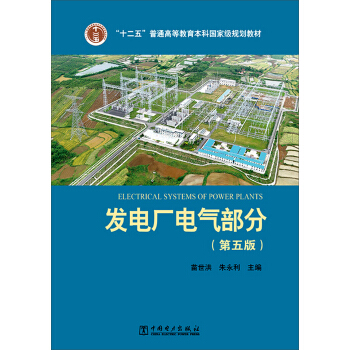
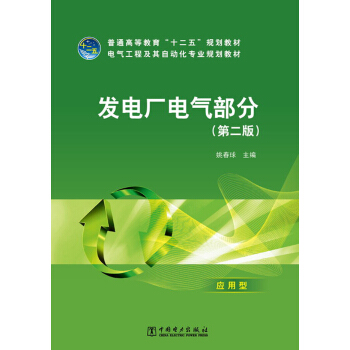
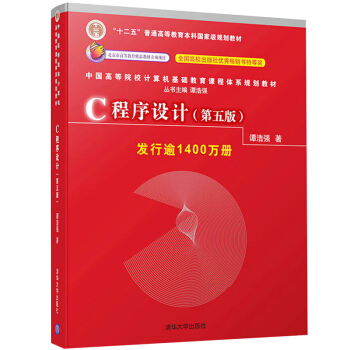


![醫學影像診斷學(第4版 供醫學影像學專業用 網絡增值服務)/全國高等學校教材 [Diagnostic medical imaging] pdf epub mobi 電子書 下載](https://pic.tinynews.org/12047327/58b623a2N8724d973.jpg)
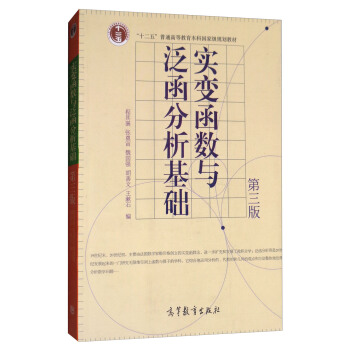
![[正版二手]高等數學同濟第六版上下冊 高數同濟第六版 同濟第6版高數 pdf epub mobi 電子書 下載](https://pic.tinynews.org/19501009109/5a055589Ndd561583.jpg)
![病理生理學(第3版 供8年製及7年製“5+3”一體化臨床醫學等專業用) [Pathophysiology] pdf epub mobi 電子書 下載](https://pic.tinynews.org/11744127/55c0aa70N12aa55e9.jpg)



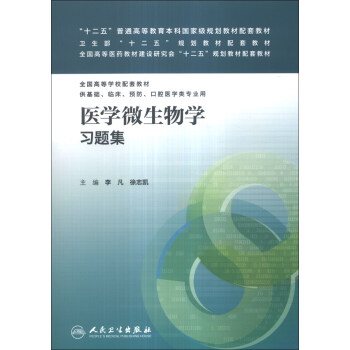


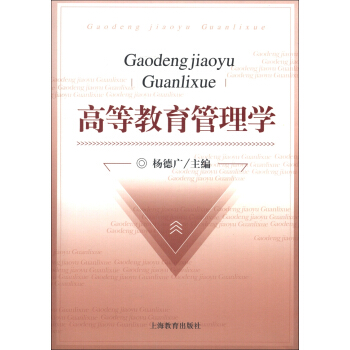
![經濟數學(微積分第3版十二五普通高等教育本科國傢級規劃教材) [Calculus] pdf epub mobi 電子書 下載](https://pic.tinynews.org/11840456/573929ebN5d863bce.jpg)